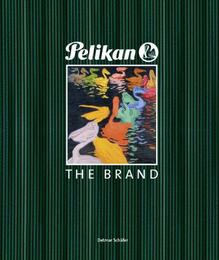Detailansicht
PELIKAN - The Brand
How the baby bird got into the nest, and how many when
ISBN/EAN: 9783923976911
Umbreit-Nr.: 4641167
Sprache:
Englisch
Umfang: 168 S., 237 Illustr.
Format in cm: 1.8 x 28.5 x 24.2
Einband:
gebundenes Buch
Erschienen am 29.04.2013
- Zusatztext
- The PELIKAN brand tells an entire story, compressed into a single sign. It is the story of the mother pelicans love and affection for her chick, which, as we know, will one day open its wings and fly. Famous artists such as Kurt Schwitters, El Lissitzky, Wilhelm Wagenfeld, O. H. W. Hadank and many more were deeply involved with the PELIKAN trademark and brand, and helped to shape them. The oldest representations of the PELIKAN pictorial logo from the time before 1878, previously unknown, are published in this book for the first time. These earliest depictions show three baby birds in the nest. Why did this become four, then two, and latterly only one?
- Autorenportrait
- The author - Dr Detmar Schäfer is concerned in his role as corporate legal counsel with protecting and defending the PELIKAN brand. Not only do pirates forge the renowned brands products: they also attempt again and again to hijack the logo, with its expressive word and picture combination, for use on completely unrelated products. It was a case of this kind that prompted the research this book is based on. In South-East Asia handsaws were discovered that bore a precise reproduction of the 1937 PELIKAN trademark - word and picture. In October 2007 the local police raided a counterfeiters workshop in the Thai jungle and seized 7,200 such saws. In order to pursue subsequent litigation in China it was necessary to for the Company to prove that it enjoyed proprietary rights under copyright law. In the course of his researches the author discovered in the Company archives a correspondence dating from 1937 between its proprietor Fritz Beindorff and the graphic artist Professor O. H. W. Hadank. In these letters, which read as if they were intended for publication, the two men exchanged ideas on how both the logotype and the pictorial sign could be further developed in an organic way. This process gave rise to a number of wonderful draft designs which, although never realised, are certainly worthy of being presented as testimonies to the way commercial art was developing at the time.
